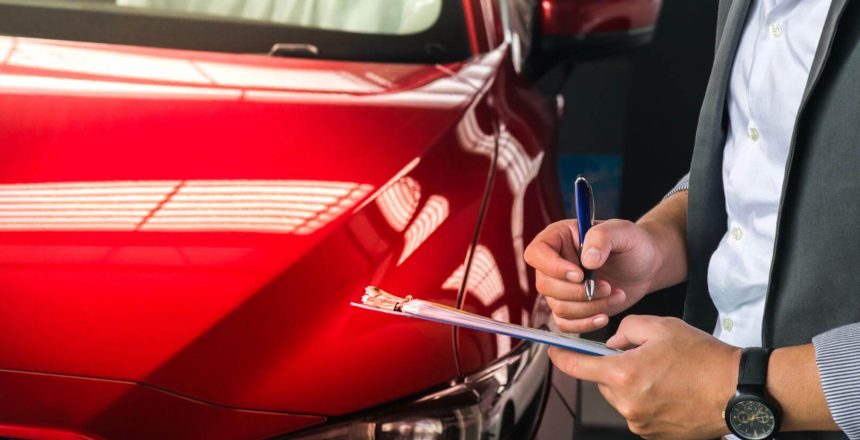After their home, a vehicle is most likely the second-largest purchase for most Americans. According to Kelly Blue Book valuation experts, the average price of a new car in January 2020 was $37,851. Whether you’re a car enthusiast or merely view your automobile as a means of transportation, that’s a significant investment. So, entrusting your vehicle to someone else’s care can be a bit traumatic, particularly if you’re transporting your vehicle across the country or the state.
To help reduce your anxiety, especially if you’re a first-time shipper, we’ve prepared this article to provide a comprehensive list of actions you should take before, and after, transporting your vehicle. Follow these steps for peace of mind and to ensure a safe and damage-free experience.
Preparing Your Vehicle for the Transport Process
We understand that you may feel some of these actions are tedious; however, we consider them prudent to ensure your vehicle is delivered safely and in the same pristine condition as when you handed the keys to the carrier. Follow these steps to reduce any risk of mayhem significantly.
Keys – Rule #1 – never give the carrier your only set of keys!
Yes, you must provide the selected carrier with keys to the ignition, trunk, gas cap, and any locked compartment. The driver obviously requires keys to drive your vehicle on and off the carrier. However, please take the time and the initiative to have a duplicate set of keys made and leave only the copies with the driver. Important note: verify that the copies fit all devices and compartments in advance. Then keep your original set of keys in your possession.
How Much Fuel Should You Leave in the Tank Before Transport
There is no need to fill your gas tank. In fact, we highly recommend that your gas tank is at one-quarter tank or less, the more fuel, the more unnecessary weight for the carrier. Your car will only be driven on and off the carrier, so any additional fuel is redundant. The Department of Transportation has weight regulations, so please be sure there is no more than a quarter tank at pickup.
Make a note of the current mileage before shipping and be sure it is indicated on the carrier’s shipping documents.
Packing Your Vehicle for Transport
Speaking of weight restrictions – don’t overpack things in your vehicle. Every vehicle has a weight limit based on its make and model. Going over these limits by a significant amount can increase charges or even cause the shipment to be rejected. Relatively light personal items may be packed in the trunk as well as luggage or small boxes; however, we recommend no more than 50 pounds maximum.
An infant car seat, spare tire, and jack are considered integral parts of the vehicle. Hence, they may be included.
Remove any aftermarket or custom items such as racks or spoilers prior to shipping. Likewise, if you have any loose parts on the exterior of your vehicle, be sure to secure them or remove them. We suggest you also remove your antenna and place it in your trunk. If your car has the feature, be sure to turn-in your side-view mirrors.
Remove all personal belongings from the vehicle to protect your privacy and proprietary information. Don’t forget to remove all your electronics and digital accessories, as well as any valuables.
One last point on packing, do not allow anything to obstruct the views out of the windows. This item is mandatory and is for the safety of the carrier’s crew. The driver often loads these vehicles onto the trailer with the mirrors folded in, using only the windows. If the driver’s view is obstructed, the potential for damage and injury increases exponentially.
Items not Permissable / Illegal During Shipping
Firearms, ammunition of any type, and fire extinguishers cannot legally be transported in a vehicle on a car carrier in certain municipalities. Be safe and transport these items in another manner. These items may be carried in your personal vehicle, provided they are locked and secured and out of reach of the driver and passengers.
Alarm Systems
If there is an alarm system, disconnect it before shipping, and provide the alarm remote to the transport driver. Don’t inconvenience the driver during transport.
How to Prepare Your Car for Shipment if it is Disabled or Inoperable
If your vehicle is currently inoperable, you must disclose this to your broker in advance. Once a carrier is assigned, the car must be parked in a safe location for pickup, with easy access to the driver, inflated tires, and fully operational brakes and steering.
Can I Ship an Over-Sized or Modified Vehicle
Unless otherwise previously disclosed to the broker’s dispatch department, vehicles that are factory stock cannot exceed certain height restrictions or minimum clearance. Vehicles being transported must have at least six and a half inches of ground clearance. The maximum height is seven-feet high; otherwise, the broker may be unable to accept your vehicle for a regular auto trailer. Understand, failure to meet these criteria may increase your estimated rate.
Wash Your Vehicle Before Shipping
Cleaning your vehicle prior to pick-up will enable an accurate vehicle inspection report and speed up the “walk-around” at pick up and again at the destination. Make a note of any existing damage such as dents, scratches, or paint chips, and take photos for your records. Be sure all existing items are noted on the carrier’s Bill of Lading.
Rarely do vehicles get damaged in the shipping process; however, better to be prepared to recognize any possible new issues.
Final Inspection at Your Destination
Upon delivery, you must do a proper inspection with the trucker. This “walk-around” inspection is a relatively simple process that takes about ten minutes. Be sure to conduct this exercise during the day to ensure you and the driver have excellent visibility of the vehicle. If any new damage has occurred during transit, you will need the damage documented on the Bill of Lading and signed by both you and the trucker to submit an insurance claim.
Remember, it is your right, your responsibility, to inspect your vehicle at the time of delivery. It is also your right to mark on the Bill of Lading any issues you might find with your vehicle. And, be sure to compare the mileage at delivery to the pre-shipment mileage on the Bill of Lading.
After the inspection, you are still legally bound to pay the trucker the transport fare, even if there is an issue with the vehicle. If there should be an issue, your transport broker is available to provide guidance and assistance.
Mercury Auto Transport
Mercury is a leading auto transport broker, in business since 2007, with over 218,000 satisfied customers. We have access to more than 13,000 licensed and insured carriers covering the United States. We provide best-in-class systems and processes for door-to-door and terminal-to-terminal deliveries, on open, enclosed, or flatbed transports.
As stated in our introduction, we provide these helpful tips to help ease your mind and ensure a safe and damage-free experience. You may also want to check out our Procedure Checklist page for more information and free downloads to print and keep for your records.
Once you do your research, you will see that choosing the right auto transport broker can make all the difference. Feel free to check out Mercury Auto Transport with the Better Business Bureau to see our ratings, and view our website for customer reviews.
We’re sure once you do your due diligence, Mercury Auto Transport will be the obvious choice.
Feel free to call us today at 800-553-1828 or visit our website at https://mercuryautotransport.com/
for a free quote or to discuss your next move.






